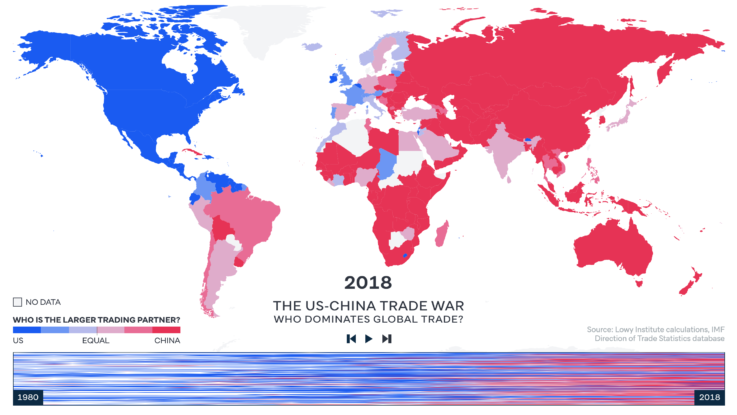
The Lowy Institute has a nice visualization of the rapid rise of Chinese trade and its displacement of the United States as the most important global trading partner.
Who dominates global trade? It is well recognised that China has become the world’s largest trading nation. Less appreciated is the effect this has had in displacing the United States from its traditional dominance as a trading partner for other countries around the world.
We examined this using data from the IMF’s Direction of Trade Statistics database, which provides a repository of bilateral trade flows for most countries. We focus on gross trade flows (i.e. exports plus imports) which serves as a measure of the degree of trade integration between two economies and ask for each country whether the US or China is the larger trading partner.
China’s rise since the turn of the century has been swift.
In 2001, the year China acceded to the World Trade Organisation, over 80% of countries with data available had a larger volume of trade with America than China. By 2018, that figure was down to a little over 30% – with two-thirds of countries (128 out of 190) trading more with China than the United States.
Equally important, 90 countries (almost half) traded more than twice as much with China as with America (these are shown in dark red in the chart).
Driving this picture is that China’s economy is far more export driven than the US, it is deeply enmeshed in global supply chains, and has been growing much faster.
Watching this trend provides a stark reminder of the transformation of international ecology – in ways that undermine Washington’s ability to engage in hegemonic ordering by reducing the instruments at its disposal.

